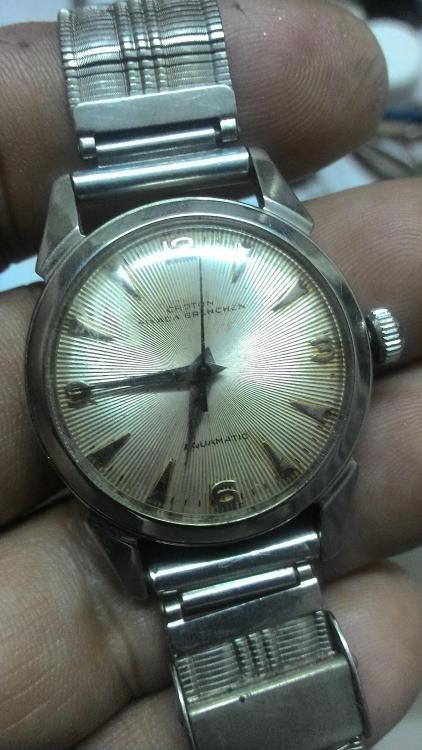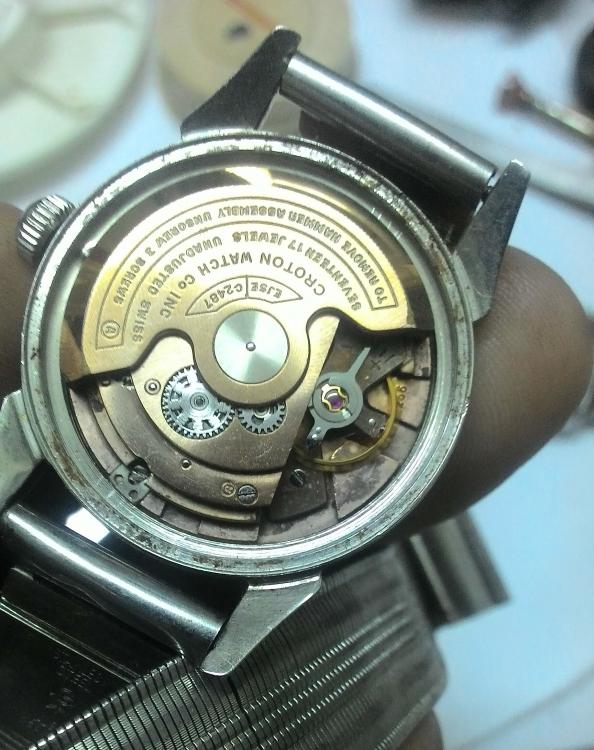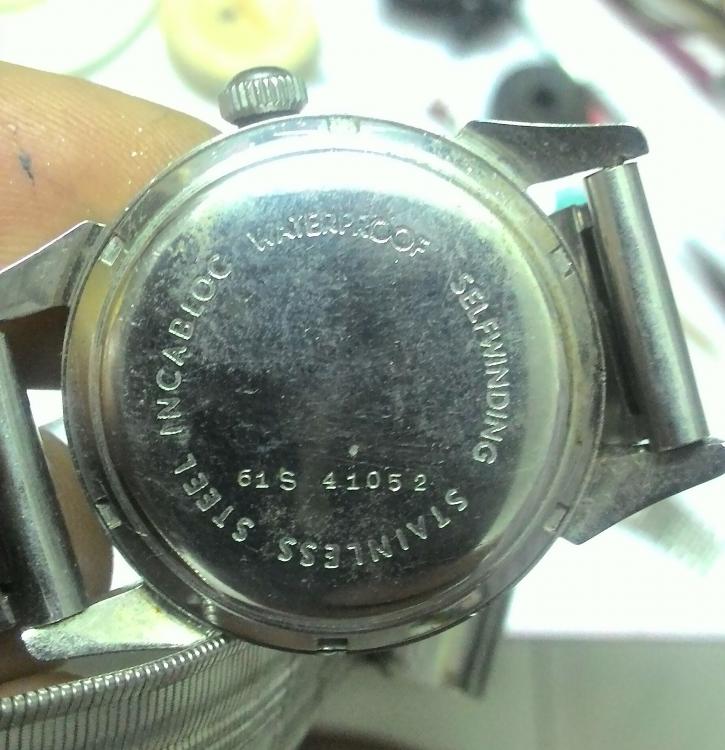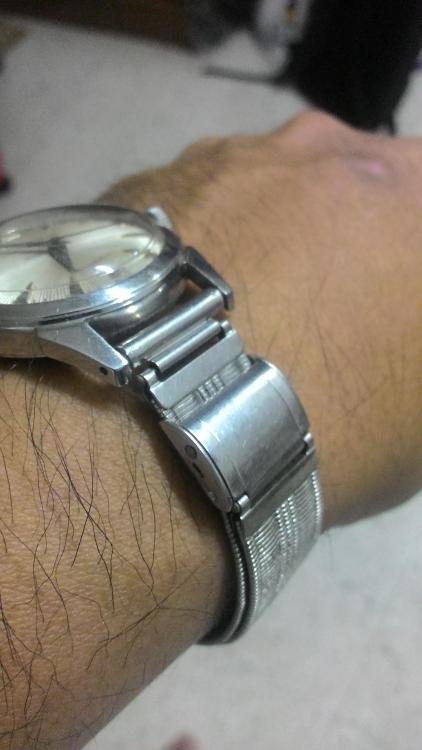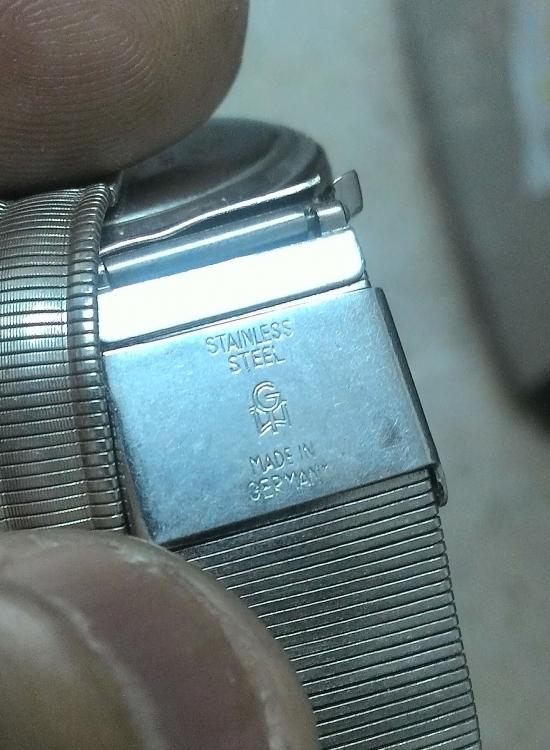Leaderboard
Popular Content
Showing content with the highest reputation on 08/10/17 in all areas
-
Generally speaking amplitude in the horizontal positions (DU/DD) is noticably greater than in the vertical due to the reduced contact area between the domed end of the balance staff and the flat surface of the cap jewel (horizontal) compared to the contact area between the side of the pivot and the side of the hole jewel in the vertical positions. In fact one of the adjustments that can be made to improve (reduce) the delta (difference in rate between positions) is to very slightly flatten the ends of the balance staff pivots so as to redude the difference in contact area between positions at the expense of amplitude in the H positions, although this should only be considered if the sides of the pivots are in as good order as they can be. A drop of 60 degrees from H to V is probably towards the higher end of what is reasonable to expect, but in my opinion it is not at all unacceptable in a vintage watch, especially when you're getting 300 in the H positions. It may be worth checking your oiling. I have in the past found that over oiling the balance pivots increases the delta between V and H positions; an interesting experiment would be to remove all of the oil and put it on the timegrapher dry to see what values you get and then adapt your oiling technique to get the optimum balance between adequate lubrication and minimising viscous drag. I assume you are using 9010 or similar for the pivots, if you are using anything heavier then changing that would help. Also you will probably find that sorting out the beat error will hellp to improve things If this were my watch and I was happy with all of the above but wanted to try and improve things still further then my next move would be to polish the balance staff pivots to try and reduce friction in the V positions.2 points
-
I have seen youtube videos on removal the only one I can find is this but I have seen another that had a better solution than this but cant find it now, Reinserting would be a reversal of the process above, I think in this video the screw he uses is too long and risks damaging the hairspring the other video I once found was a american guy who had used a similar method but he had made a tool for the purpose that looked better than this solution but I cant find it. I think you could do something along these lines with a bit of care.2 points
-
Morning guys (at least in South East Asia!) Digging thru my collection to find something to wear this Friday I pulled out this. A 'Croton Nivada Grenchen Aquamatic'.. now that's a mouthful, as the actress told the bishop. Inside we find a nicely finished ETA1256 movement. This would be one of the first ETA automatics. ETA kindly provided instructions on the rotor (hammer)... "TO REMOVE HAMMER ASSEMBLY UNSCREW 3 SCREWS 'A' ". Probably they were worried that watchmaker of the day would have problems with these newfangled technology!. Croton were one of the early innovators of waterproofing and they achieved this on early models with a case back that was fastened by 4 screws. These might have worked back in the day but they're just a pain today as the screws are usually badly damaged. This example is a bit recent and has a screw down case back. I wonder is the stamped 61S denotes year of manufacture? Groton watches are not too rare but stainless steel cases are less common and you usually find basemetal cases watches. I've got it on a vintage brand which is super supple and suits the watch. It is similar to a 'bonklip' in function. This is the bandmakers mark. Cheers! Anilv1 point
-
I was awarded one penalty point by a moderator for posting a link. I don't know how many you can accumulate before some dire punishment is meted out. Regardless, I will continue to try to help this dying breed. We will all be combing eBay if Swatch is successful. There will be no need to post links because there will no longer be any parts suppliers. Cheers!1 point
-
Well I've been publicly tarred and feathered on other forums but have found WRT members to be quite forgiving when it comes to failures of etiquette. Looks like it's part 750-1516.1 point
-
first law of mechanics; "don't remove the parts you don't need to". you can clean those with peg wood. vinn1 point
-
I am still looking for a bow for my jacot, however, the badge reel works very well. The jeweling tool I have used a lot. Most old pocket watches that have a bad jewel have a cracked jewel on the third wheel, lower...don't know why, perhaps the forces there are greater. So I have pressed in a few jewels. I have also pressed in jewels on a 7750 watch and a few others. Sent from my GT-N5110 using Tapatalk1 point
-
1 point
-
Why did you remove the hairspring from the balance cock? You should have just removed the end stones to clean the balance holes, also if you have a good watch cleaning machine and the holes don't look dirty you don't need to remove them. As far as I can remember it isn't made to be taken apart.1 point
-
I had a small box of shellac handed down to me and it was donkey’s years old. I used the flakes for setting watch pallet stones and the pallet stones on French clocks with visible escapements. I never had any problem with what I had.1 point
-
Signature Analysis of Mechanical Watch by.pdf Please read this document. It can help you understand the sound of the wristwatch and the equalizer settings.1 point
-
Oh well some you win some you lose. I can tell you the looser is the buyer because when it is time to have it overhauled they might just find out they have wasted their money on a pile of junk.1 point
-
I think jeweling tool is next for me. I already have the Jacot, don't know why I bought that first, except that a very nice one (with a bow!) came up at a good price.1 point
-
1 point
-
Stopwatches are different then regular watches for hand removal. Usually with stopwatches the hands are not removed but the dial is removed with the hands. The hands are friction on with extreme force to a tube that on the backside has a heart shaped cam. So basically the hands go on spring-loaded cannon pinions with a heart-shaped cam used for resetting.1 point
-
I'm not convinced that adjusting the roller position is a good idea for adjusting beat error as it will put the balance out of poise. I would try it the normal way by moving the hairspring collet very, very slightly. Give the jewels and the caps a good clean. The caps should have had an almost mirror finish before placing the oil on. Use pegwood/cocktail stick/stiff brush to clean out the upper and lower jewels after they have soaked. I usually soak the pegwood in the same solution to help it along.1 point




